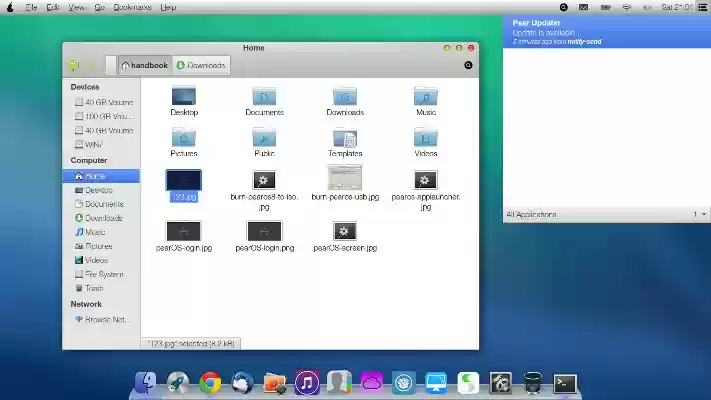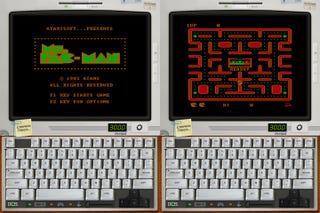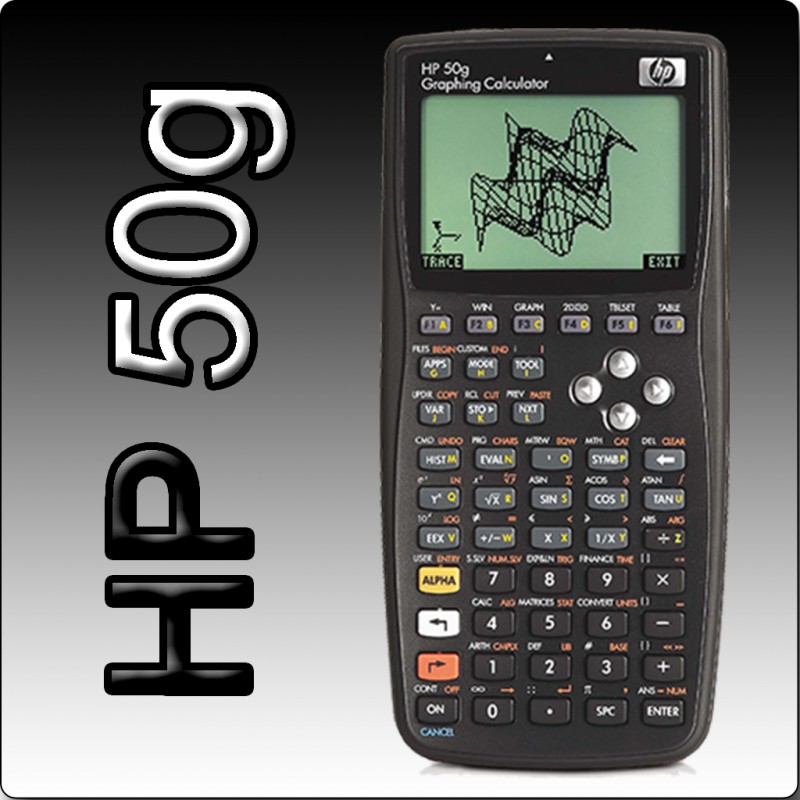App.iO is one of the best iOS emulators and are very easy to use. Well, along with this. Dec 5, 2016 - And yet there are apps written for OS X Leopard that won't run in OS X El. Apple's Classic environment is an emulator of Mac OS 9 that was. Most software you find online will in the form of '.sit' files, which have been. Home page of the SheepShaver Macintosh emulator.
About:

Welcome to the Hatari web site!
Hatari is an Atari ST/STE/TT/Falcon emulator for GNU/Linux, BSD,Mac OS X, Windows and other systems which are supported by theSDL library.The Atari ST was a 16/32 bit computer system which was first released by Atariin 1985. Using the Motorola 68000 CPU, it was a very popular computer havingquite a lot of CPU power at that time.Unlike many other Atari ST emulators which try to give you a goodenvironment for running GEM applications, Hatari tries to emulate the hardwareof a ST as close as possible so that it is able to run most of the old ST gamesand demos.Hatari is open source software and is distributed under the terms of theGNU General Public License (GPL).
Features:
Hatari supports the emulation of most of the ST and STE hardware, including somespecial tricks like raster interrupts, border effects and PSG sample sound.A joystick can be emulated with the cursor keys or with a real PC joystick.Hatari also features the possibility to 'mount' a directory of thehost system as a ST drive, or to use images from an original Atari's hard disk.
Hatari is also able to emulate the additional hardware of the TT or Falconmachines, like the Videl video chip or the DSP 56001. However, note that TTand Falcon support are currently still in development and experimental.

System requirements:
Hatari needs a fast machine (1 GHz or more for ST/STE emulation, > 2 GHzfor Falcon emulation) which is running a POSIX compatible operating system(preferably GNU/Linux) that supports the SDL library.There are also some ports to other operating systems like macOS or Windows,please see the links page for more information.Non-Linux systems like FreeBSD etc. are rarely tested, so if you run intoproblems while compiling Hatari on such platforms, please let us know!
Have a look at the downloads page for detailsabout the required libraries and available packages.Some binary packages are now available, too, but not for all architectures.So you might need to also have GNU C on your system to recompile the sourcecode of Hatari.
Before you can finally run the emulator, you also need a TOS image file.TOS is the built-in operating system of the Atari 16/32 bit computers.Since it is not possible to ship one of these image files with Hatari,you either have to create your own image from your Atari or you have touse EmuTOS, a free TOSreplacement.
What?! Does something about this article seem odd, not as you remember, or too good to be true? Check the date it was published!
:max_bytes(150000):strip_icc()/-best-iphone-emulators-of-2018-4580594-1-5c15567b46e0fb00016e0e3e.png)
Pundits have long speculated that Apple is working on ARM-based builds of Mac OS X that would allow the company to use its proprietary A7 CPU (or successors) in Macs as well as iOS devices. This is nothing new for Apple, which secretly compiled Mac OS X for Intel-based hardware for years while Macs shipped with PowerPC CPUs.
But we hadn’t realized how far this work had come until a source inside Apple tipped us off to the fact that Apple is testing OS X 10.9 Mavericks on current iPad hardware. Not only that, but the ARM code is embedded in the shipping version of Mavericks. After months of attempts, we’ve cracked how to install and run Mavericks on the iPad Air.
It goes without saying that this is a total hack, and several caveats apply:
- The code works only on the iPad Air. Earlier models are not supported, nor is the latest iPad mini, even though it has nearly identical internals.
- It completely replaces iOS on your iPad Air and wipes your existing data. To remove Mavericks and go back to iOS, you must put your iPad into Recovery Mode and restore through iTunes. If you’re not familiar with that process, don’t even think about trying these steps.
Almost nothing works. As with the move from PowerPC- to Intel-based CPUs, a Rosetta-like translation layer will be necessary for existing third-party apps to function, and it’s still missing. The only apps that work are those for which Apple has produced fat binaries: we’ve identified Finder, Terminal, Activity Monitor, Disk Utility, and Console so far.
With all that in mind, let’s install Mavericks and get it going.
First, download OS X Mavericks (5.3 GB) from the App Store, if you don’t already have a copy of the installer in your Applications folder from a previous install.
While it downloads, install Numbers and Keynote on your iPad Air, if they’re not already installed.
Also while you wait, create a plain text file in your favorite editor on the Mac, containing just the following line:
load InstallESD.dmg OSXARM
Save that as MacInstall.plist on the Desktop. Then create another text file with this line:
boot InstallESD.dmg
Save that as ARMboot.plist on the Desktop as well.
Once the Mavericks installer has downloaded, connect your iPad Air to your Mac via a Lightning cable and open iTunes. Now would be a good time to perform a backup of the iPad, if you haven’t already, so you can later revert to iOS.
Mac Os X Emulator For Ipad Pro 10.5
In iTunes, select your iPad in the sidebar, click the Apps button, and scroll down to the File Sharing section. Next, select Numbers and drag ARMboot.plist into the Numbers Documents list. Finally, select Keynote and drag MacInstall.plist into the Keynote Documents list.
Mac Os Emulator Download
When all the files have been copied, click Sync in the lower right, wait for it to finish, and then eject the iPad and disconnect it from your Mac.
Before proceeding, make sure you have a Bluetooth keyboard and trackpad set to pairing mode. Touch doesn’t yet work in Mavericks, but the operating system will look for Bluetooth devices to pair with when it first boots. You can also use the Lightning to USB Camera Adapter ($29) and a USB hub to connect a USB keyboard and mouse, which may be less finicky.

Now, turn off your iPad by holding the Sleep/Wake button down for a few seconds. Once it’s off, make sure iTunes is still running, reconnect the iPad to your Mac via USB, then press and hold the Sleep/Wake and Home buttons simultaneously to turn the iPad back on to start the installation process. You’ll know it’s working when you see a black screen with the Mavericks logo.
Once the iPad boots in ARM mode, iTunes launches the Mavericks installer on the Mac, and makes the iPad available as a destination disk. The installation process is the same as it would be on a Mac, and when it’s done, your iPad will boot into Mac OS X and work just like a tiny Mac. Enjoy playing with OS X on your iPad, at least to the extent that’s possible today!
The Future of the Mac? — What does this mean for the Mac’s future? Apple is obviously working on ARM test builds of Mac OS X alongside the Intel versions, but that doesn’t necessarily mean that the Mac will move to Apple’s A7 CPU any time soon. We know that Apple built Intel versions of Mac OS X for years before making the switch away from PowerPC-based CPUs. These ARM builds could be merely a proof of concept, they could be Apple hedging its bets, or they could even be a bargaining chip with Intel to keep CPU prices down.

If the Mac does switch to the A7 or a later version of that chip, the chief advantage would be battery life. Imagine a MacBook Air that could run for 24 hours or more before needing a charge! And it would seem likely that Apple could reduce costs (and prices) by doing so — the estimated costs of the A7 are under $20, whereas the Intel Core i5 chip in the MacBook Air cost $342 at release). But the drawbacks could be severe: less processing power (at least for now), presumably no more Boot Camp, and once again, developers would have to jump from onearchitecture to another, even with a Rosetta-like translation layer to ease the transition. If Apple could get enough CPU power into a future A-series chip, though, it’s easy to see the company making yet another architecture jump at some point.

Comments are closed.